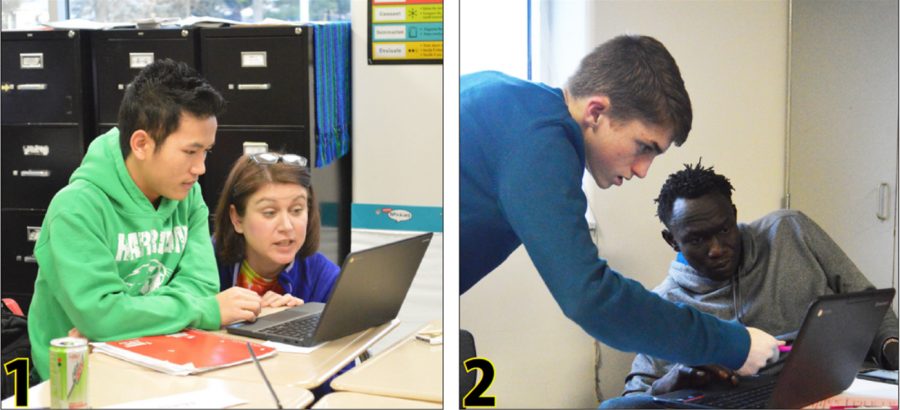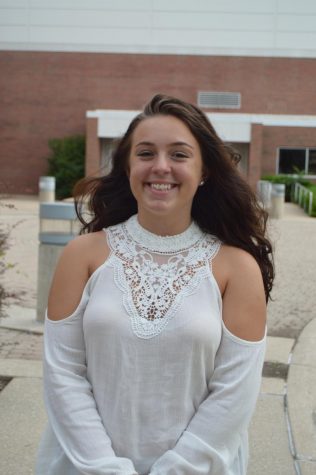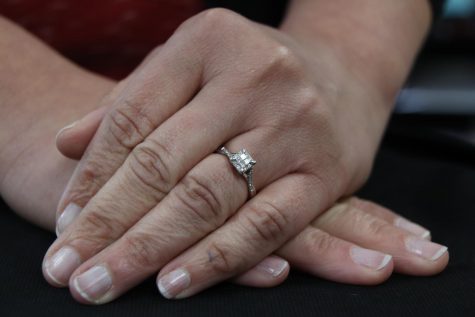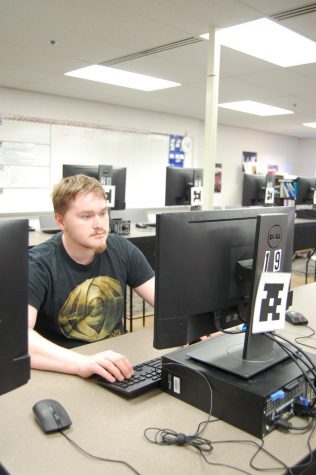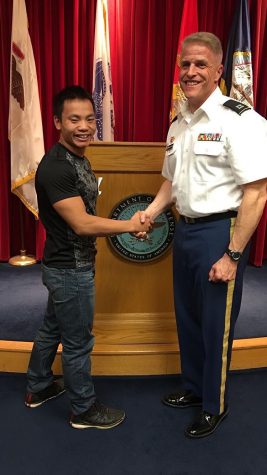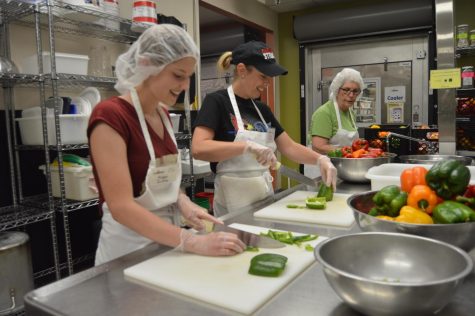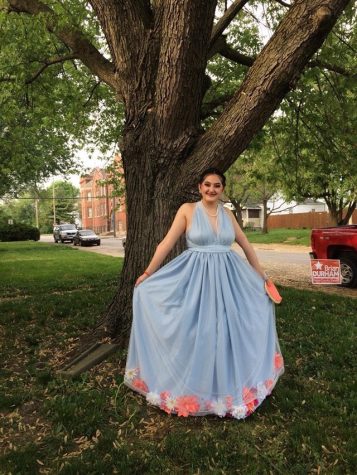Adapting to new education
Grace Iang and Melissa Bushong
(1) Senior Ro Biak Lian works with EL teacher Amy Peddie during his ENL class on Jan. 13. (2) Senior Dut Mabok (Right) gets aid from junior Luke Manning (Left) as they work on their Chromebook Jan.17.
January 19, 2017
Sitting in his first period class, senior Ro Biak Lian waits for the teachers to switch classes, but instead, he is startled by a loud bell.
“When the bell rang, I didn’t know what to do,” Lian said.
One of his friends unexpectedly gets up from his seat and taps him on the shoulder to tell him that they have to get up and move classrooms.
Since Lian came to SHS from Myanmar when he was 13, he was used to staying in one classroom the entire day while the teachers swapped rooms, but he was faced with confusion when he started school at SHS.
Lian is not the only student who has found themselves in an
uncomfortable or confusing situation because of their move to a foreign country. The education style that’s used in The United States is definitely different than those in other countries.
Another student, senior Dut Mabok, came to SHS in 2014 and is originally from South Sudan. Mabok says that the education in America is very different than the education in South Sudan. For example, he says that his old school is outside, and similar to Lian, they do not move classes.
Lian and Mabok both agree that people often don’t take education seriously in their countries because it’s hard to find good work even with a degree. Lian says that most kids’ parents often do not support them in school, which is one of the reasons why he moved to America.
“Here, the parents get more (of an) understanding of how important education is, and we gain so much more support,” Lian said.
However, as much as Lian and Mabok prefer SHS to their past school, they both had a hard time transitioning. Neither one of them spoke English very well, and that was just the beginning of their struggles.
Because SHS has over 2,000 students and approximately 135 classrooms, both were very lost on their first day. Another obstacle they faced was a communication barrier which made it hard to get help.
Without the help of the basketball team, Mabok says, he would have never found his classes.
English Language teacher Amy Peddie deals with a majority of foreign students who can speak well conversationally but struggle with academic language.
Peddie says that each kid handles his or her situation differently, but most kids are very apprehensive for the first few weeks. She says that they go through a cultural shock, so students spend quite some time listening and learning the language until they’re brave enough to speak.
“They kind of have the deer in the headlights look,” Peddie said.
However, alumni Kaylee Collins went to SHS all throughout high school and has recently spent a semester in Richmond at the American International University in London. According to Collins,
the educational system there is a hybrid between the American system and the British system. For example, she says that all the teachers are English and the grading system is different than in America.
She says that she misses how well-rounded the education system in America, but she plans on attending University of Southern California next semester. According to Collins, her classes aren’t advanced as she would like them, and the course load is too centered around one major.
“(I noticed after I left that) Southport’s education system is actually really good,” Collins said.
Eventually though, they all adapted to the new education system, and none of them feel out of place now.


